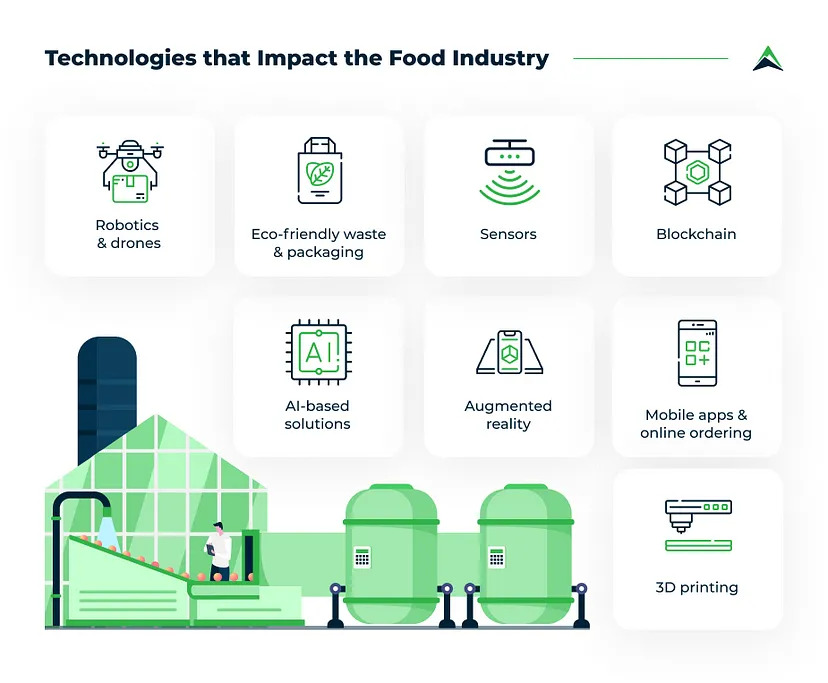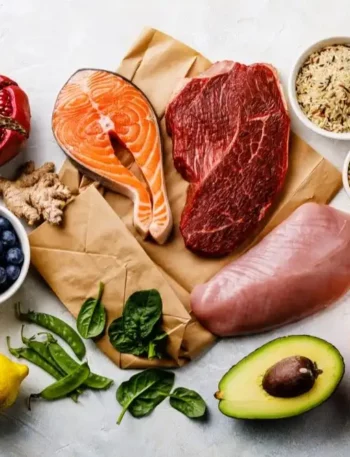
In today’s interconnected world, technology is a major force behind the way we grow, buy, prepare, and even think about food.
Innovations across fields like agriculture, social media, food science, and e-commerce have not only reshaped the food industry but have also changed the tastes, expectations, and eating habits of consumers worldwide.
As technology continues to evolve, so do our food choices and culinary practices. Today we’ll explore the many ways technology influences global food trends, from making new foods accessible to driving sustainability and personalized eating experiences.
Technology’s Role in Shaping Food Production
One of the most profound ways technology has transformed food trends is by revolutionizing food production. Today’s farmers and producers have access to tools and practices that improve crop yields, reduce environmental impact, and make a greater variety of food available to consumers.
Precision Agriculture and Vertical Farming
- Precision agriculture uses technology like GPS, drones, and data analytics to monitor and manage crop production at an incredibly detailed level. Farmers can optimize water use, apply fertilizers and pesticides more precisely, and even predict the best times for planting and harvesting. This technological approach increases productivity while minimizing environmental impact, making fresh produce more accessible and affordable.
- Vertical farming is another innovation changing the game, especially in urban areas. By growing crops in stacked layers within controlled environments, vertical farms can produce food year-round with significantly less land and water. Companies like Plenty and AeroFarms are leading the charge, using LED lighting and automated systems to grow greens, herbs, and even strawberries in indoor facilities, contributing to the popularity of local, fresh produce.
Food Delivery and Convenience Technology
The food delivery landscape has been transformed by technology, with mobile apps and online services making it easier than ever for people to access a wide variety of meals at the touch of a button. This convenience has led to new global eating habits and changed how we think about food.
Rise of Food Delivery Apps
The growth of food delivery platforms like Uber Eats, DoorDash, and Deliveroo has significantly impacted the restaurant industry and consumer behavior. People are now accustomed to having an array of cuisines delivered right to their door, often opting for convenience over cooking.
This shift has led to a rise in ghost kitchens — restaurants that operate solely for delivery services, with no physical storefront. As a result, consumers have more options than ever before, driving trends in global cuisine as people explore dishes they might not have otherwise tried.
Ready-Made Meal Services
Services like Blue Apron, HelloFresh, and Daily Harvest provide another layer of convenience by delivering meal kits and ready-made meals directly to consumers’ homes. This trend has sparked a global appreciation for diverse, nutritious, and convenient meal options.
Additionally, these services often cater to dietary preferences like vegetarian, keto, or gluten-free, allowing people to personalize their diets with ease.
Tip: If you’re interested in exploring global flavors, try subscribing to a meal kit service that offers recipes from different cuisines each week. It’s a convenient way to experiment with new tastes and ingredients.
Social Media and Food Trends
Social media has become one of the most powerful tools for influencing global food trends. Platforms like Instagram, TikTok, and YouTube make it easy for food trends to go viral, sparking interest and curiosity across borders.
Viral Food Trends
From Dalgona coffee to baked feta pasta, social media has the power to make dishes trend overnight. These viral trends often inspire people to try new recipes, bringing international flavors and styles into home kitchens worldwide.
The visibility of food content has even made certain dishes, like avocado toast and bubble tea, into lifestyle symbols, with their appeal going beyond taste to become part of a global aesthetic.
Influence of Social Media Influencers
Influencers and content creators also play a crucial role. Platforms like Instagram and TikTok feature countless food influencers who highlight various cuisines, ingredients, and cooking techniques. This exposure can increase the demand for certain foods, drive restaurant visits, and promote lesser-known cuisines on a global stage.
“Food is the one language that everyone understands, and social media has allowed it to travel faster than ever before.” — Eater magazine
Technology in Food Innovation
Another area where technology is driving global food trends is in food innovation. New products like plant-based meats, dairy-free cheeses, and lab-grown proteins are changing the way we eat and redefining our perception of traditional foods.
Development of Plant-Based and Lab-Grown Proteins
Companies like Impossible Foods and Beyond Meat have pioneered plant-based meat alternatives that mimic the taste and texture of real meat. These products appeal to consumers looking to reduce their environmental footprint or follow plant-based diets without giving up favorite dishes.
Similarly, lab-grown meat companies like Memphis Meats are creating cultured meat that could reduce the ethical and environmental issues associated with conventional meat production.
This shift is not only expanding consumer choices but also influencing major food industry players. For example, fast-food chains like Burger King and McDonald’s now offer plant-based options, showing that technology-driven food innovation has reached mainstream acceptance.
Research indicates that lab-grown meat production could reduce greenhouse gas emissions by up to 96% compared to conventional meat production.
E-commerce and the Globalization of Food Products
With the rise of e-commerce, consumers have access to foods and ingredients from all over the world. Platforms like Amazon and Alibaba make it easy to purchase international ingredients, while specialty stores like Yummy Bazaar offer curated selections of global foods.
Effects on Fusion Cuisines
As people have access to a broader range of ingredients, fusion cuisines have become more popular, blending flavors from different cultures. This cross-cultural experimentation has led to creations like sushi burritos and Korean tacos, appealing to adventurous eaters and expanding culinary possibilities.
Tip: Many e-commerce platforms offer subscription boxes with international snacks and ingredients. Subscribing to one can be an exciting way to explore global flavors at home.
Data-Driven Personalization in Food
Technology isn’t just changing what we eat — it’s also personalizing how we eat. Through AI and data analytics, companies can offer personalized meal plans, dietary recommendations, and even supplements that cater to an individual’s unique needs.
AI-Powered Meal Planning
Apps like Noom and EatLove use AI and data analytics to provide tailored meal plans based on individual health goals, dietary restrictions, and lifestyle. These personalized approaches help consumers make better dietary choices and stick to health goals more effectively.
As technology advances, there’s growing potential for personalized nutrition based on genetic analysis, which could guide consumers on the foods best suited to their unique biology. Personalized meal planning can promote better health outcomes by aligning food choices with individual nutritional needs.
Example: A study in the journal showed that personalized diets based on AI predictions improved glucose levels in participants, highlighting the potential of technology to influence healthier eating habits.
Technology has a powerful influence on global food trends, affecting everything from what we eat to how it’s produced and delivered. From agricultural innovations that make food production more sustainable to social media-driven food trends, technology is shaping food culture at every level.
Key Takeaways:
- Technology in food production (like precision and vertical farming) is making food more accessible and sustainable.
- Convenience technology (e.g., delivery apps, meal kits) has shifted consumer behavior, making a wider range of cuisines easily accessible.
- Social media plays a crucial role in spreading food trends globally, popularizing dishes and ingredients across cultures.
- Food innovation through plant-based and lab-grown options is changing dietary habits and redefining traditional foods.
- E-commerce platforms enable access to international foods, fostering culinary exploration and fusion.
- Personalization through AI is helping consumers make healthier, tailored food choices.
As technology advances, our relationship with food will continue to evolve, creating both exciting possibilities and challenges.
Embracing these changes can help us stay connected to global food trends while being mindful of sustainability and personal health.
Whether it’s trying a plant-based burger or ordering a regional delicacy from across the world, technology enables us to explore flavors we never thought possible.









